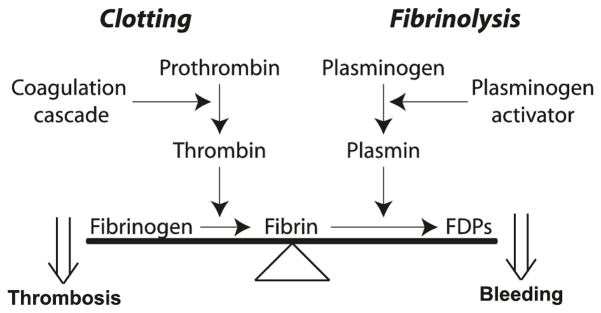Fig. 13.1.
Basic scheme of fibrin clot formation and fibrinolysis and the balance between these processes. The clot is formed via a cascade of enzymatic reactions that activates prothrombin to the proteolytic enzyme thrombin, which converts soluble fibrinogen to make insoluble fibrin, the process referred to as blood clotting. The fibrin clot is dissolved through fibrinolysis or cleavage by the proteolytic enzyme plasmin, resulting in fibrin degradation products (FDPs). Plasmin is formed on the fibrin surface from the zymogen plasminogen by plasminogen activators. There is a balance between clotting and fibrinolysis such that excess clotting can lead to thrombosis, while excess fibrinolysis can lead to bleeding

